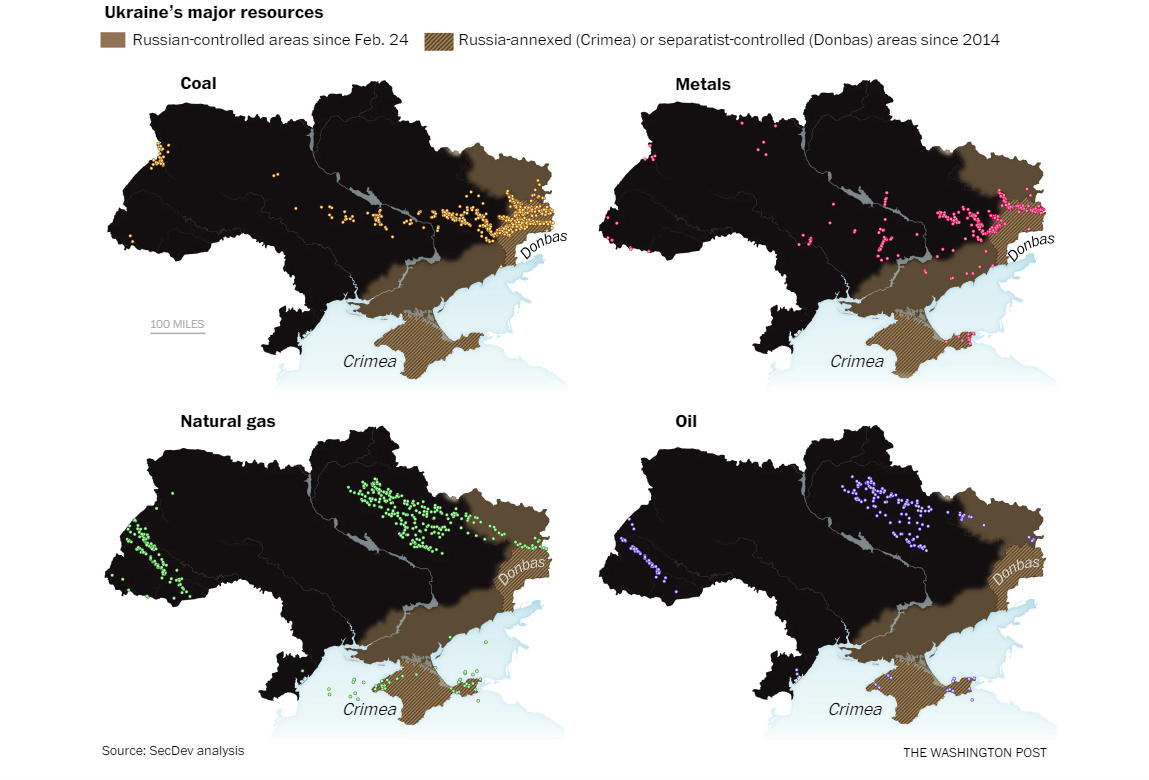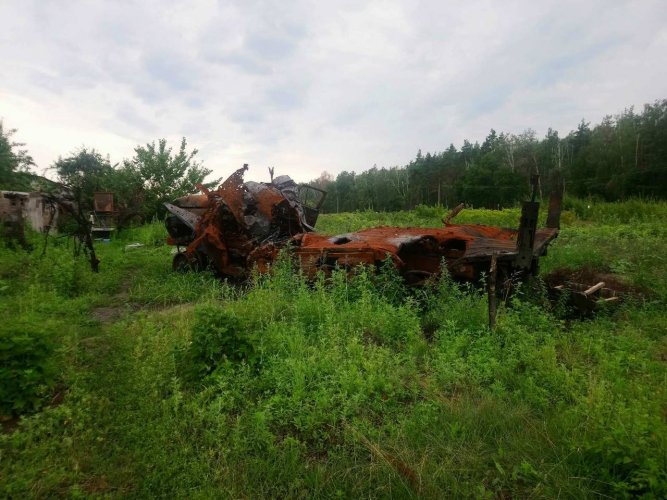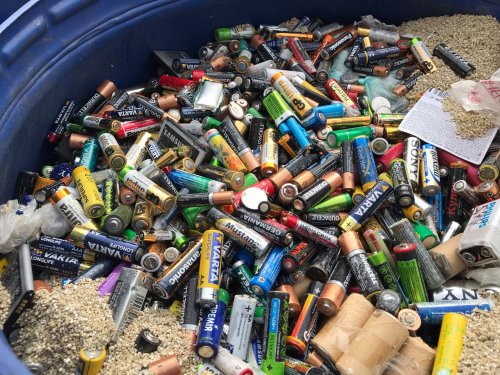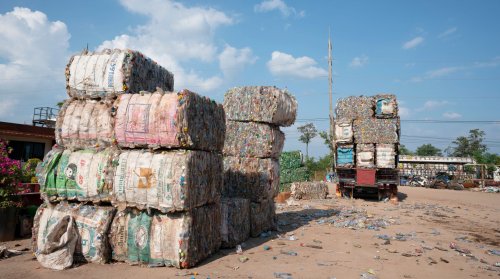In Ukraine, russia does not stop blackmailing actions at Zaporizhia NPP and around it, trying to hold the whole world hostage, using the nuclear power plant as a nuclear weapon.
The hostilities destroy the environment, polluting it for many years, and the full-scale war in Ukraine is a tragedy on a global scale, reports Ministry of Environment.
"The environment has no boundaries. Poisonous waters will enter European rivers and the world's oceans, and polluted air can be carried away by winds to any point on the globe," the article noted.
The Verkhovna Rada appealed to the UN, the EU, the European Council, the Organization for Security and Cooperation in Europe, the parliaments and governments of the IAEA member states to condemn the act of nuclear terrorism committed by the aggressor state at the Zaporizhzhia nuclear power plant.
A team of Ukrainian journalists from the publication "Eastern Option" presented the film "Hidden threat" about the consequences of war for the environment, where the comments of leading experts in the field are collected.
Despite the war, Ukraine continues to implement European integration reforms in the field of environmental protection. On August 16, the parliament supported it in the first reading draft law No. 5159 "On amendments to some laws of Ukraine regarding the introduction of liability for violation of the procedure for carrying out a strategic environmental assessment". This draft law will help prepare the ground for an ecologically balanced recovery of the country from the consequences of the war.
Threats to nuclear and radiation safety
"Periodic shelling of the Zaporizhzhia nuclear power plant by Russian troops using MLRS caused a serious risk to the plant's safe operation," the message said.
As a result of the attack on the Zaporizhzhia NPP, the emergency protection of one of the power units was activated, and one of the three operating power units was disconnected. Three radiation monitoring sensors were damaged near the dry spent fuel storage facility of the ZNPP. There are still risks of hydrogen leakage and emission of radioactive substances, while the risk of the fire hazard is also high.
August 11 russian occupiers again shelled the ZNPP’s territory. As a result, they damaged the household sewage pumping station. Extensive smoke was recorded nearby. On the same day, the fire station came under fire. It is located beyond the ZNPP’s territory and is supposed to be used for fire protection and extinguishment of flames in the event of an emergency at the plant.
August 13 the 750 kV open switchgear (VRP-750) was also damaged due to russian shelling. On August 14, an employee of the Zaporizhzhya NPP Maksym Marko died as a result of Russian shelling.
According to the President of Ukraine Volodymyr Zelenskyy, these shellings indicate that russia rejects the security demands of the European Union and 15 other countries calling on the russian federation to withdraw its military forces from the plant.
Any radiation accident at the Zaporizhzhia NPP may affect many countries. Everything will depend solely on the direction and strength of the wind.
"We need to move on from discussions and calls to new tough sanctions against Russia, against Rosatom and the entire nuclear industry of the terrorist state. All Russian forces must immediately withdraw from the territory of the power plant and neighbouring areas — no conditions attached," commented Volodymyr Zelenskyi.
Attacks on infrastructure and industrial facilities
August 11:
- shelled a workshop in the village of Prydniprovske, the Dnipropetrovsk region, a fire broke out as a result of the attack;
- shelled a mill in the village of Velykomykhailivka, the Synelnykivskyi district, the Dnipropetrovsk region. Due to the fire, local farmers lost 120 tons of grain.
August 12:
- shelled the city of Marganets in the Dnipropetrovsk region with "Grad" MRLS and artillery, damaging a factory and a printing house;
- shelled the port infrastructure of Mykolaiv with the "Uragan" MRLS;
- launched rocket attacks at infrastructure facilities in the city of Zaporizhzhia. As a result, the territory of two enterprises in the Shevchenkivskyi district was damaged.
August 13:
- shelled the city of Nikopol, damaging industrial facilities and a gas pipeline;
- carried out rocket and artillery attacks in the Donetsk region, damaging 101 buildings, in particular, 2 factories;
- destroyed agricultural machinery and the premises of a local agricultural company in the village of Ternuvate, the Zaporizhzhia region;
- hit industrial facilities in the city of Mykolaiv with "Smerch" MRLS.
On August 14, russian troops shelled Nikopol, the Dnipropetrovsk region, damaging industrial buildings and gas pipelines.
August 15:
- due to the shelling of Nikopol, warehouses, workshops, and administrative premises of an industrial enterprise were damaged;
- Russian occupying forces shelled 15 settlements in the Donetsk region damaging a thermal power plant and a water filter station;
- as a result of rocket attacks on the Merefa community of the Kharkiv region, an abandoned enterprise was damaged.
On the night of August 16, russian troops carried out one of the most massive shellings of Kharkiv in recent times. As a result of shelling, the tram depot was damaged. A fire on an area of about 100 square meters broke out in the garage cooperative.
August 17:
- launched rockets at Zatoka in the Odesa region. As a result of the attack, a large-scale fire broke out on a total area of more than 600 square meters.
- attacked Mykolaiv with S-300 missiles, damaging the university building and one of the city's industrial enterprises.
Large-scale fires at infrastructure and industrial facilities lead to air poisoning with particularly dangerous substances. Pollutants can be carried by winds over long distances.
Russia seized oil, gas and gold deposits in Ukraine with reserves estimated at over $12 trillion.
After the full-scale invasion, the Russian Federation steadily expanded the area of captured deposits. It is about:
- 41 coal deposits;
- 27 – natural gas;
- 14 – propane;
- 9 – oil;
- 6 – railway;
- 2 – titanium and zirconium ore;
- 1 – strontium, lithium, uranium, gold, as well as a limestone quarry.
Currently, the russian federation controls 63% of Ukraine's coal deposits, 11% of oil deposits, 20% of gas deposits, 42% of metals and 33% of rare earth and other important minerals, including lithium.

Pollution directly caused by hostilities
From 24 February to 17 August 2022, 181,535 explosive devices, including 2,101 aircraft bombs, were neutralized in Ukraine. An area of 68,546 hectares was surveyed for explosives.
On August 16, the Commander-in-Chief of the Armed Forces of Ukraine, Valerii Zaluzhnyi stated that the Russian military forces shell Ukrainian positions 700-800 times a day, firing from 40,000 to 60,000 shells daily.
Currently, Ukraine is one of the most mined countries in the world. About 200,000 square kilometers, almost a third of the territory of Ukraine, need to be demined.
Mining significantly damages the environment. Detonation of mines leads to forest fires. If there is no fire, the fragments of the mines damage the trees. Wild animals often trigger landmines. Confused and frightened, the wild animals leave their habitats and migrate massively. New habitats often are not suitable for them, that’s why the biodiversity is declining.
Ammunition fragments release heavy metals into the soil - chromium, zinc, iron, copper, mercury. These substances reach groundwater and enter the human food chain.
According to the National Police, almost 4,200 residential buildings were destroyed and damaged in the Kharkiv region since the beginning of the Russian full-scale invasion. Destruction of buildings and settlements leads to pollution by construction debris and asbestos. The consequences of such pollution to the environment will last for years.
In particular, according to the SEI, environmental damage from the destruction of a multi-story residential building in Kharkiv is estimated at UAH 4.8 billion.
After heavy fighting, hundreds of buildings were destroyed in the Kyiv region, and more than 2 million tons of construction debris accumulated in the Buchansk community alone. An Israeli company is ready to invest in the construction of a plant for the ecological processing of construction waste and to dismantle high-rise buildings destroyed during hostilities in the suburbs of Kyiv. In the process of processing, construction waste will become building material for the reconstruction of destroyed cities.
"The launch of such a project will help to work out the most effective mechanisms of interaction between the authorities, municipalities, and the private sector and, in the future, apply this experience in other regions of Ukraine that suffered from the russian aggression," the article noted.
Pity the nature reserves and protected ecosystems
August 11
- due to hostilities, a pine forest caught fire in the Novokakhovske forestry and the Oleshkivske forestry of the Kherson region. 100 hectares of pine forest caught fire near the village of Kardashynka due to shelling by the russian army.
- forest areas in the Mykolaiv region were shelled three times, in particular Balabanivske and Halytsynivske forestries. The total area of destroyed forests was 20 hectares. The fire extinguishing works were complicated by gusty winds, repeated shelling by the occupier, and ammunition that did not explode during the shelling and could detonate from the fire.
On August 13, shelling with mortars and artillery of nature conservation areas in Shostkinsky district of Sumy Oblast.
Scientists are worried about the future fate of the Kamianska Sich National Nature Park in the Kherson region. After the occupation of the region by the Russian invaders, its territory became a front-line zone. The occupiers have set up temporary military camps and have hidden the military vehicles in the park’s numerous ravines with flourishing vegetation and springs of fresh water. Trees from the surrounding forests, which should be under protection, are ruthlessly cut down for firewood and to strengthen military fortifications. The park employees are simply not allowed to work – some of them had to evacuate due to threats to their families and personal security.
There are areas of unique steppe vegetation in the Kamianska Sich National Nature Park. In terms of area, they are the largest after the Askania-Nova reserve. There was a very real threat of their destruction or damage.
The European Association of Zoos and Aquariums coordinates fundraising to help Ukrainian zoos affected by the war.
Damage to water resources
Russian troops are deliberately striking at the infrastructure for water intake, purification, and supply, as well as sewage treatment facilities. Due to the Russian aggression, water supply and sewerage facilities in the Luhansk, Donetsk, Zaporizhzhia, Kharkiv, and Mykolaiv regions have been significantly damaged.
On August 13, as a result of hostilities, power was cut off at the Karlivska water filter station in the Donetsk region. Constant shelling by the occupiers prevents repair works.
The city's military-civilian administration reported that the lakes in the temporarily occupied Severodonetsk are rapidly drying up. The lakes Chyste and Parkove, which served as a place for townspeople to relax, have already shrunk many times. As a result of the occupation, up to 80% of the residential buildings in Severodonetsk have been ruined, and the water supply and sewage systems have been destroyed.
The head of the Mykolaiv regional military administration warned the residents of the region not to swim in rivers and lakes. Russian cluster munitions were found even in the places where no shelling was recorded. They were probably brought to the shore by an underwater current. Therefore, there are no safe water reservoirs in the region.
Diving groups continue surveying water bodies in the Kyiv region. A total of 93.5 square meters have been surveyed since the beginning of the russian military aggression. km, including 13 sq. km – Irpin River bed, 80.5 square meters. km – the channel of the Dnipro River. 2 helicopters, 2 armored combat vehicles, 3 infantry fighting vehicles, 6 amphibious assault vehicles, and 21 anti-tank mines were found and raised in the reservoirs.
Black and Azov seas
Russian troops have placed a large number of mines in the waters of the Black Sea, threatening both shipping and people and marine animals in Ukraine and other countries of the Black Sea region.
On August 14, in the town of Zatoka in the Odesa region, three people were killed as a result of a mine-explosive device detonation near the seashore.
As EcoPolitic reported before, a preliminary assessment of the impact of the war in Ukraine on the ecological situation showed that war is literally toxic, and future generations will live with a toxic legacy.





